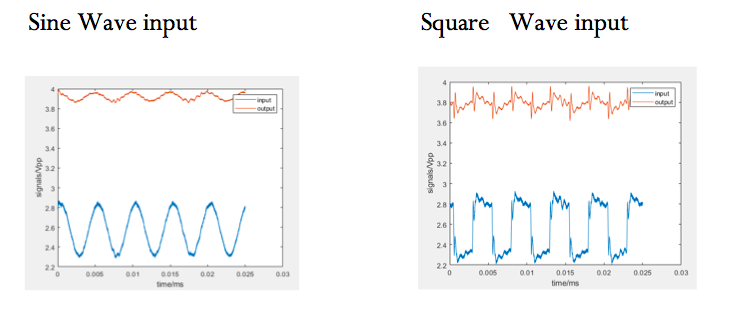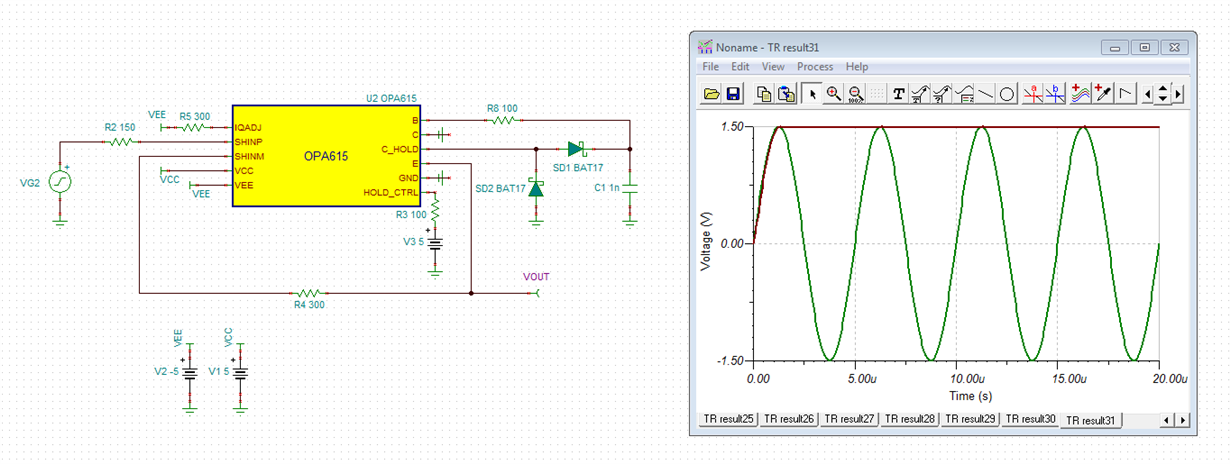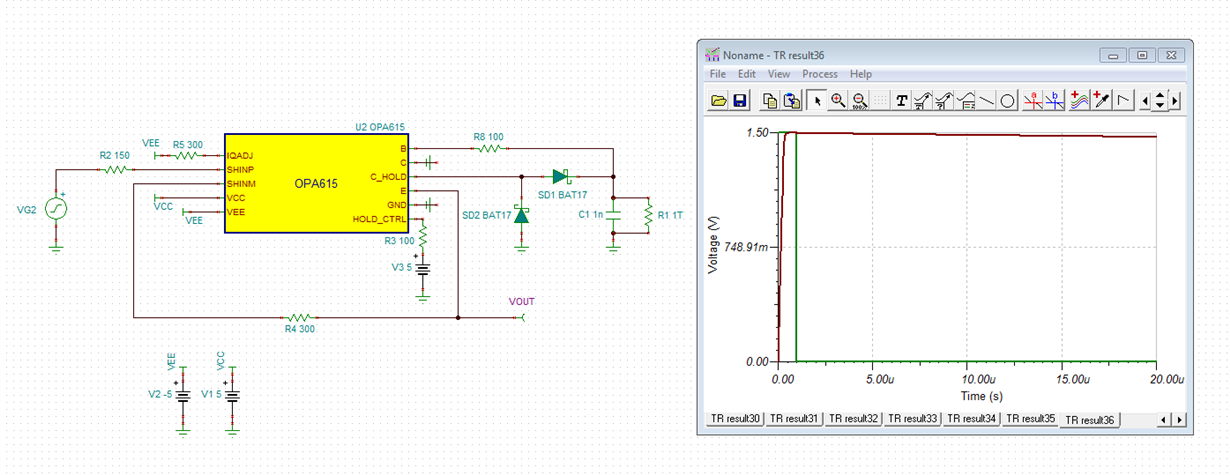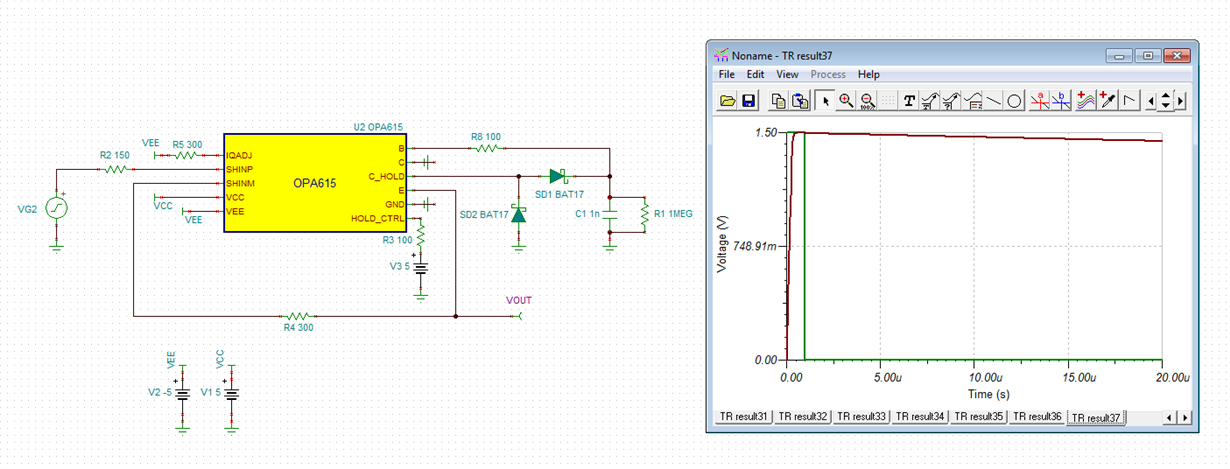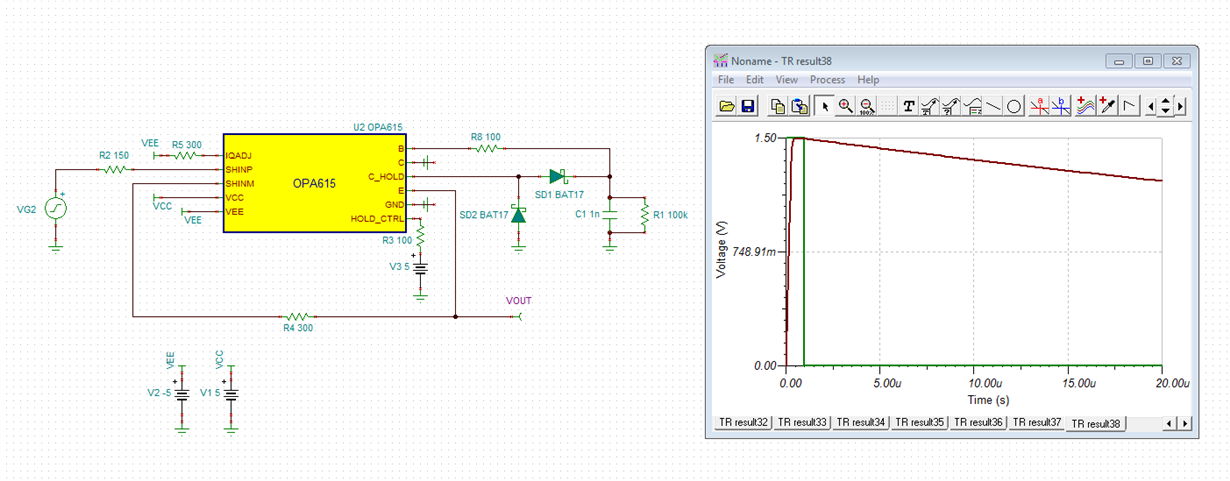Other Parts Discussed in Thread: DEM-OPA-MSOP-1A, TINA-TI, DEM-OPA-SO-1C
I am trying to build the positive peak detector listed as figure 48 in the datasheet . I used the evaluation board and it did not work and I am wondering if someone has actually built this and has tried to see if it can detect the positive peak and hold it. Also the packaging of OP615 does not come with pin configuration. I have already used two boards and still did not get anything. I shifted my circuit to a breadboard but it seems my output is just following the input and there is no holding that is occurring even when I use the 27 pf capacitor. Below are my outputs for two trial waves (square/sine). Also is there anyone who can help me with how I can wire the evaluation board correctly for the fast pulse detector because there is no directions of how it is wired and its kind of confusing just looking at the data sheet of the evaluation board because it only gives pins. 